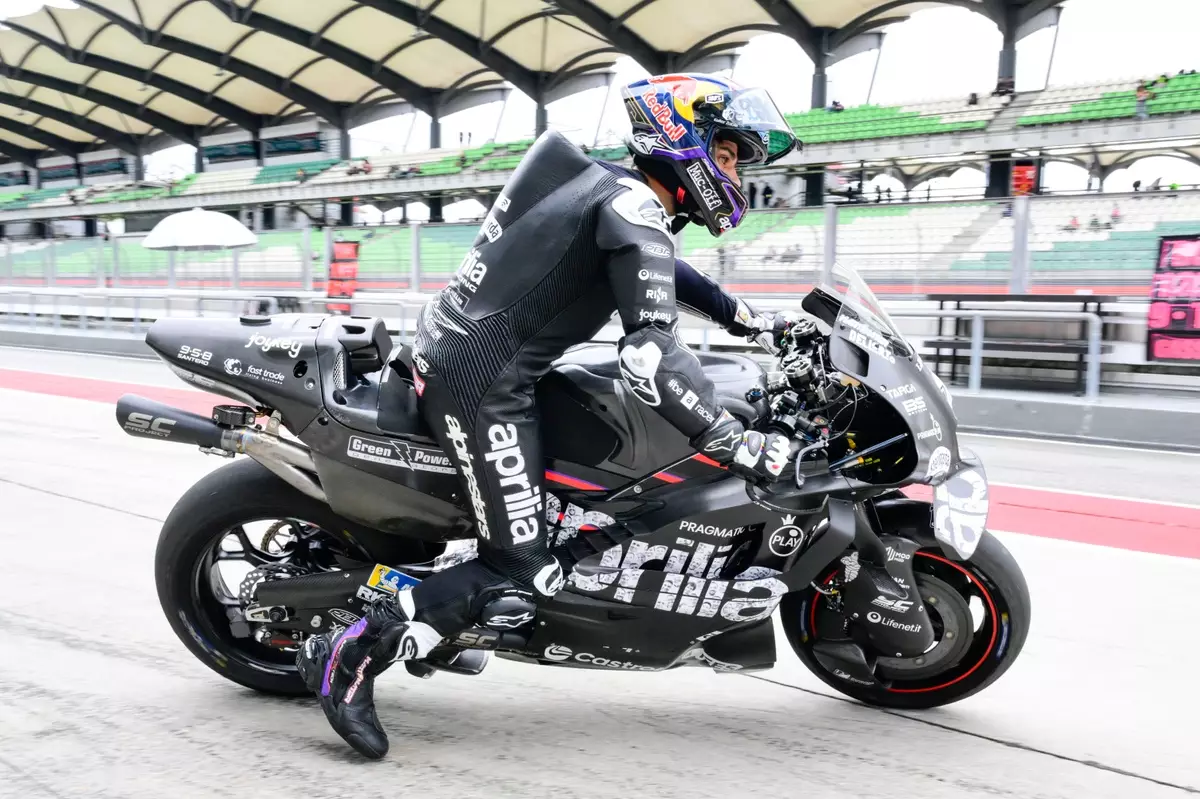The world of MotoGP was jolted awake during the pre-season testing in Sepang when reigning champion Jorge Martin suffered a devastating crash. Known for his exceptional skill, Martin’s misfortune resulted in a significant highside, where he was violently thrown from his motorcycle and landed heavily on the ground. The event raised immediate concerns regarding rider safety and the integrity of the equipment they rely on. Following the incident, Aprilia, Martin’s team, has actively challenged Michelin’s initial assertion that the crash stemmed from a drop in tire temperature, fueling an ongoing debate about the accountability of tire manufacturers in the sport.
In the aftermath of the incident, Michelin claimed that a sensor indicated Martin’s rear tire temperature was 15 degrees Celsius lower than optimal conditions prior to the crash. This explanation, while technically sound, has been met with skepticism from Aprilia’s management, particularly from their motorsport director, Massimo Rivola, who suggested that the data collected during the crash was at odds with Michelin’s narrative. His assertion that Martin had no fault in the crash and that the motorcycle functioned correctly was a clear message aimed at Michelin’s credibility. Rivola’s concerns were compounded by his inquiry regarding the age of the tire compounds, fearing that tires stored for extended periods could compromise performance and safety.
Rivola’s outspoken nature reflects a growing frustration among teams and riders regarding tire safety in MotoGP. His suggestion for a meeting with all teams highlights a crucial need for collective dialogue in addressing these urgent issues. The alarming injury rates in recent seasons necessitate a reassessment of protocols to ensure that rider safety is the primary focus. Rivola is advocating for transparency and accountability in tire manufacturing, stressing that incidents like Martin’s should prompt not just investigation, but substantial reforms within the sport.
Following his crash, Martin endured a painful reality, facing fractures to both his right hand and left foot. Medical intervention became imperative, sending him back to Barcelona for surgery on his right hand. The operation, overseen by renowned surgeon Dr. Xavier Mir, was successful, with plans for a swift recovery laid out for the young talent. Thankfully, the fractures in his foot did not necessitate surgical intervention, but the road to recovery remained uncertain. The contrasting outcomes for each injury illustrate the unpredictable nature of motorcycle racing accidents and the resilience required from athletes to return to competition.
Looking forward, there is evident uncertainty surrounding Martin’s participation in the upcoming pre-season test in Buriram. As both Martin and teammate Raul Fernandez are provisionally listed for the event, it remains contingent on medical clearance, adding another layer of stress for the Aprilia team. The shadow of the crash looms large; even as the team gears up for the season ahead, they must also navigate the physical and psychological ramifications of such incidents. Aprilia has meticulously vowed to assess Martin’s recovery before making any hasty decisions regarding his participation in future events.
The recent crash involving Jorge Martin has opened a Pandora’s box of conversations surrounding safety standards and tire integrity in MotoGP. As industry leaders and stakeholders assess the situation, the need for collaboration and transparency has never been greater. With riders’ lives at stake, the MotoGP community must come together to ensure that high-profile incidents prompt not just inquiries but resolute changes to safeguard the sport’s athletes. As fans, teams, and riders hope for Martin’s swift recovery, the event serves as a stark reminder of the inherent dangers in motorsport and the collective responsibility to protect those who engage in it.


Leave a Reply